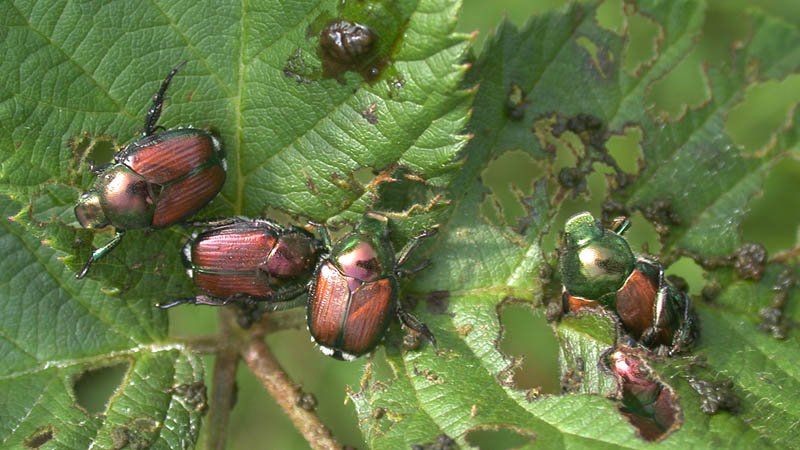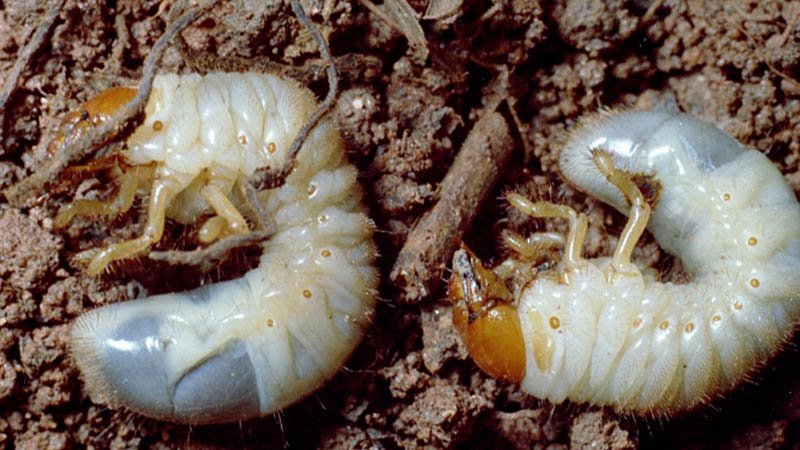
Many superintendents no doubt have not been happy with the hot, wet conditions that have prevailed over much of the eastern half of the country this summer. White grubs, on the other hand, are in hog heaven.
"In this part of the country, we've had plenty of rain, so the turf is not as stressed as it otherwise might be, but that also means that grubs probably have had a good hatch," said Purdue University entomologist Doug Richmond, Ph.D. "The moisture has been there, so the survival rate is probably going to be pretty good."
Grub populations in western Indiana, Richmond said, mostly are in the second instar stage with a few third instars mixed in. Anyone with a history of grub populations in their highly maintained turf knows what's next.
"They're well on their way," he said. "As a matter of fact, some areas already are seeing damage."
It is still early enough in the season that most of the traditional products for grub control still are viable.
"This time of year, we're still in August, almost any of the tools we have will still be effective," Richmond said. "I don't have a favorite choice. That is up to the superintendent and what their budget will bear, but you really can't go wrong at this point."
It is important, University of Kentucky entomologist, and 2010 USGA Green Section Award winner Dan Potter, Ph.D., said, to hit grubs as early as possible.
"Once the grubs are nearly full-sized, we typically see no more than about 70 to 75 percent control," Potter said.
If damage already is evident, Richmond and Potter both recommend a curative response that includes something fast-acting like trichlorfon or chlothianidin.

"The monsoon rains in the Ohio Valley region will have encouraged egg survival so there should be plenty of grubs in the field," Potter said. "Also, we had a very heavy Japanese beetle flight this year. But, all that rain means is that the grubs will be more dispersed than normal. Ordinarily, non-irrigated roughs and other grassy areas that go summer dormant won't attract much egg-laying, so our grubs are concentrated in irrigated turf. This year, I expect we'll find plenty of grubs even in non-irrigated areas. Hopefully, by the population being more spread out, we'll see fewer in the usual prime areas like fairways and tee banks. If it stays wet, then moderately infested turf will outgrow the root loss and may not show as much damage. But, if we get into drought these next three weeks, it may accentuate it. But who knows? Predicting where grubs and damage occur is not an exact science."
White grub damage typically is most evident in August and September. Symptoms of an infestation are gradual thinning, yellowing, and weakening of the grass followed by scattered dead patches. As damage continues, the dead patches may increase in size, and apparently healthy turf areas may exhibit sudden wilting. The turf may feel spongy as you walk over the infested area.
Heavily damaged turf can peel away easily. If damaged areas do not pull back easily, the problem might be attributable to something else, according to Potter.
Preventing grub damage might be as simple as learning the history of prior grub-related issues.
Adult beetles are likely to return to lay eggs in areas where infestation has occurred in the past, Potter says.
Early scouting also is important.
"It doesn't have to be too labor intensive," Richmond said. "Just take a few cup cutter samples or wedges of soil. If you find grubs, you know you have something you have to keep an eye on."
Even then, not all grubs are created equally. Larger species, like the masked or European chafers, are larger and can do more damage than say the smaller Japanese beetle. Likewise, the European chafer has a longer life cycle, and can be feeding on roots earlier in the season and later into the summer.
"As educators, we tend to throw all white grubs into the same basket because the same tools work on all of them," Richmond said. "But some are larger and cause more damage at lower densities, so they have lower thresholds. It is important to understand how the feeding ecology, behavior and size come into play."


